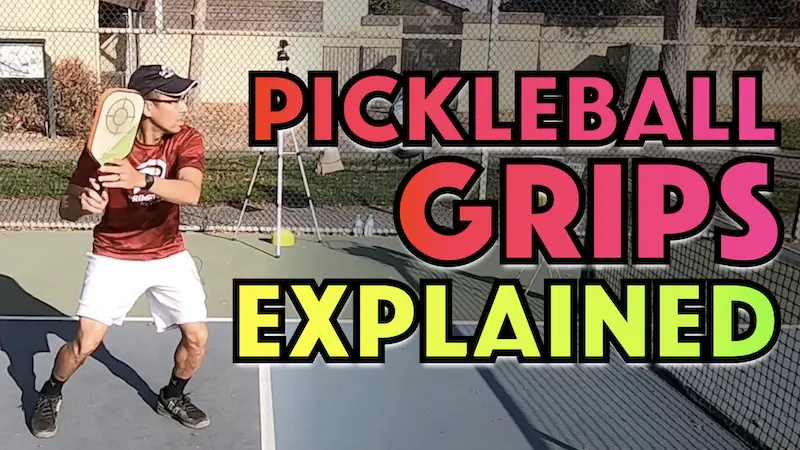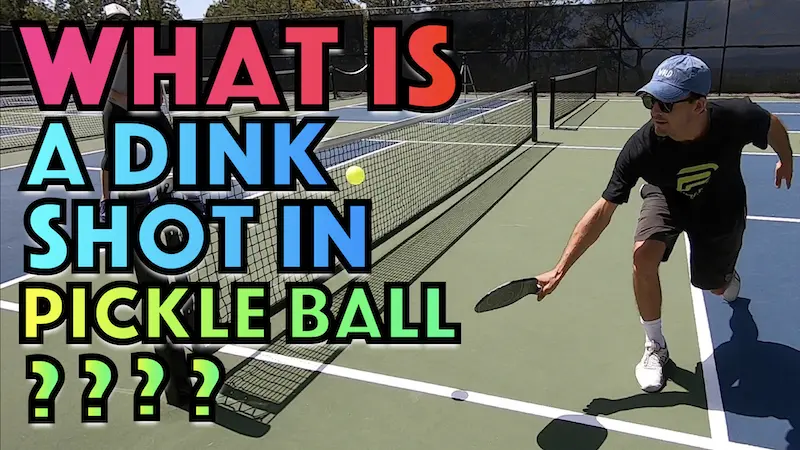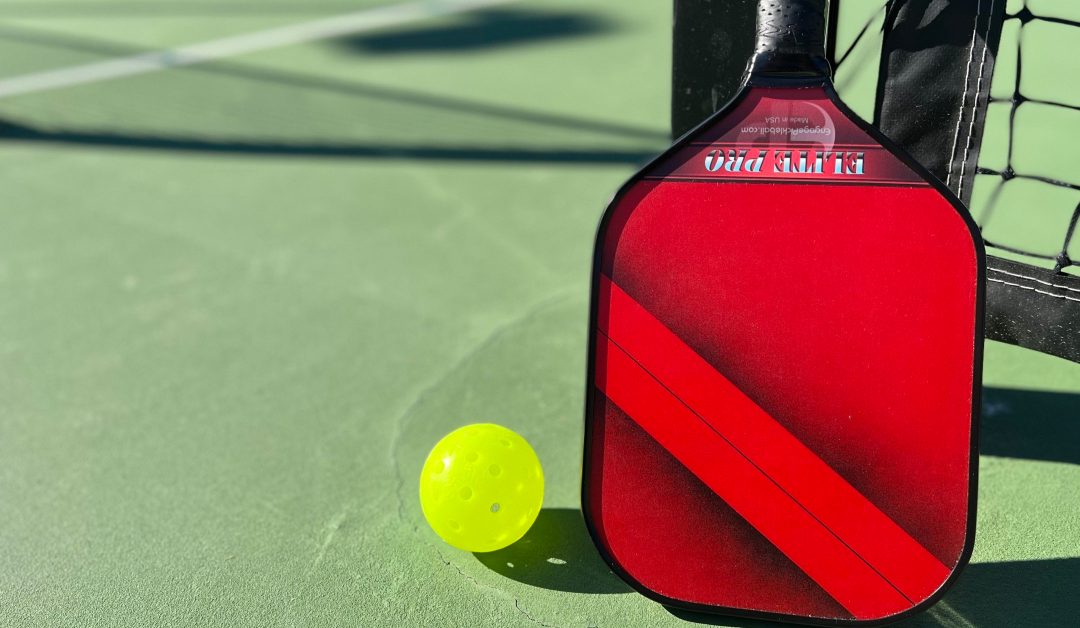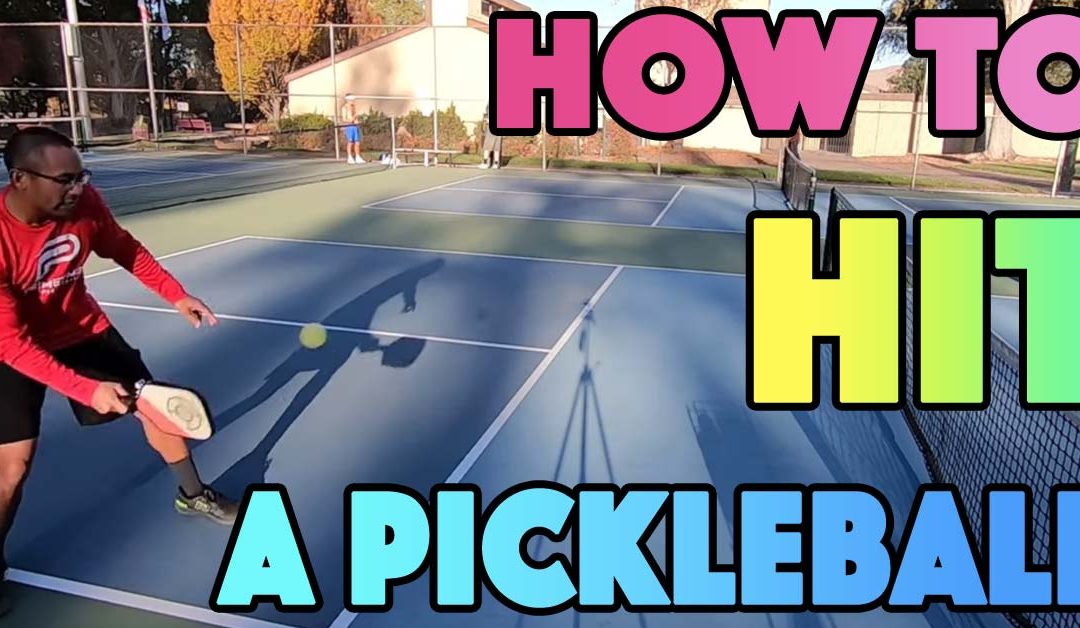In today’s blog we’re going to talk about the most common pickleball grip.
We’ve received a lot of questions and comments about what kind of grip to use and what kind of grip we recommend.
So, in today’s blog, we’re going to talk specifically about the most common pickleball grip and that is the continental grip.
We’re going to describe to you all the shots that we hit with this continental grip. We’re going to discuss why it’s so common and universal as well as why it’s just a good grip to have if you are a beginner all the way up to an advanced player.
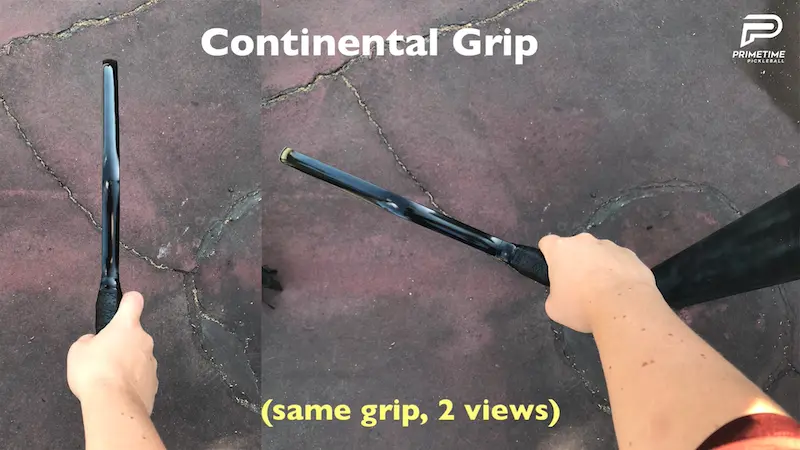
In a future blog we’re going to cover advanced grips and we’re going to describe to you all the shots that we hit with different kinds of grips. So tay tuned for that when that comes out.
The first thing we want to start off talking about is the dink.
One reason why this grip is so common and so universal is that this continental grip is good for dinks at the kitchen line. You can take the ball out of the air or let it bounce on your forehand or backhand side.
It’s very comfortable for both sides so you don’t have to switch grips.
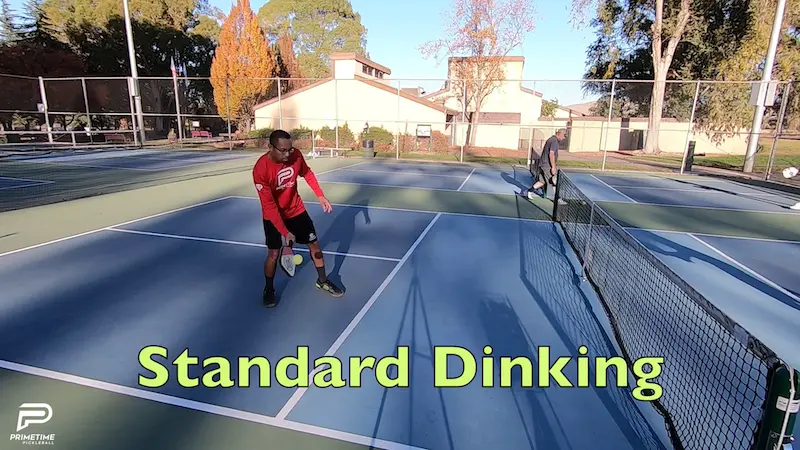
If you’ve been playing pickleball for any length of time you know that, at the kitchen line, it could go from a slow dink rally to a really fast volley fire fight.
The continental grip is also a good grip to use for volleys.
It creates a good open angle with your paddle face on the forehand and the backhand side. This is what you want when you’re volleying. For example when you’re hitting a regular punch volley.
By using the same grip you could easily go from a volley to a dink on your forehand or backhand.
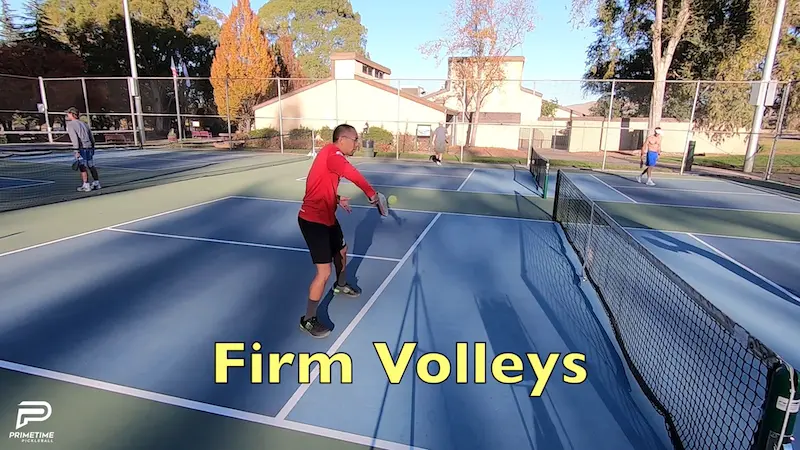
A lot of times in the game of pickleball you will find yourself in cross court dink rallies. Either from odd side to odd side or even side to even side.
You’ll find yourself in those rallies because it is a high percentage play and that net is the lowest in the middle. For you to hit a dink to cross that middle of the net is a smart play and you have a lot of margin for error.
The under spin or the slice dink from your backhand as a righty could really be a natural shot and if it’s not it’s a shot that you can develop with the continental grip.
The continental grip is the right one to have when slicing the ball and hitting it with underspin on your dinks. This holds true if you’re hitting from the odd side or even side of the court.
The slice under spin dink tends to stay a little lower and it has has some bite and cut to it so the continental grip is a great grip to have when you’re hitting slice on the forehand side, dinks and volleys.
Dinks and volleys are more than half of the game of pickleball.
Now we will talk about third shot drops from the baseline.
The continental grip is a great grip to use on your forehand or your backhand side. You’ll be contacting the ball out in front with the same exact grip on your forehand and your backhand side.
You don’t have to change so you don’t have to worry about what grip you’re going to hit when you’re back at the baseline.
Next, you’ll also use this grip when you’re making your way to the net from the baseline to the non-volley zone (these are going to be your fifth, seventh, ninth shots) or if you’re getting stuck and need to hit a reset shot.
These shots in midcourt can also use the continental grip whether you take it out of the air or let it bounce. Even if you get one a little bit high that grip will still be practical to use.
If you get it in the air as a volley make sure your contact is out in front and split step after each ball.
When you transition from the baseline to the non-volley zone and your third shot doesn’t drop exactly the way you wanted it to you can keep making your way up to the net, set your feet, split step and try to hit that neutral ball and then proceed all the way to the kitchen line all while using this grip.
In regards to serving and returning the continental grip, yet again, is a great grip to use for your serves and also your return whether your returns are going to be on the forehand side or the backhand side.
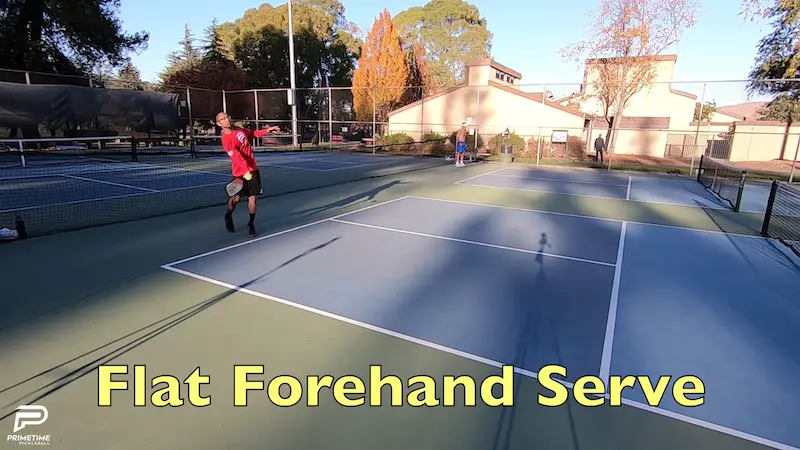
Lastly we’re going to talk about overheads. This is actually a really good grip, it’s a preferred grip, for an overhead. When you pronate and you hit the ball and hit that snap you’re going to create a lot of power with this continental grip.
We know we just covered a lot of different shots. This just goes to show you how versatile this continental grip is and why it’s the most common and most universal grip to use.
As we mentioned, in a future blog, we are going to go over all the shots we hit that don’t use this grip so stay tuned for that.
There’s many intermediate to advanced shots that cannot be hit with this continental grip so that blog is going to be coming soon and will be very helpful to you.


